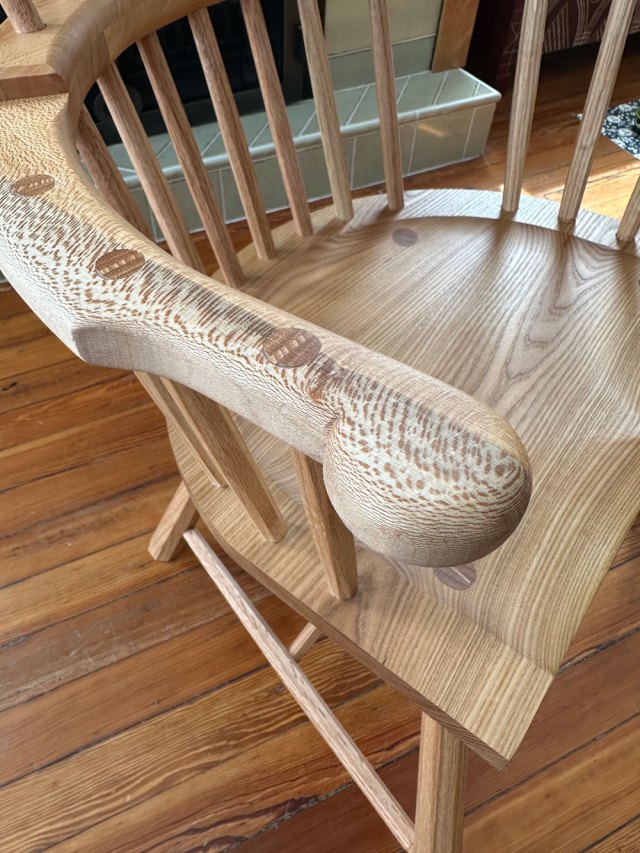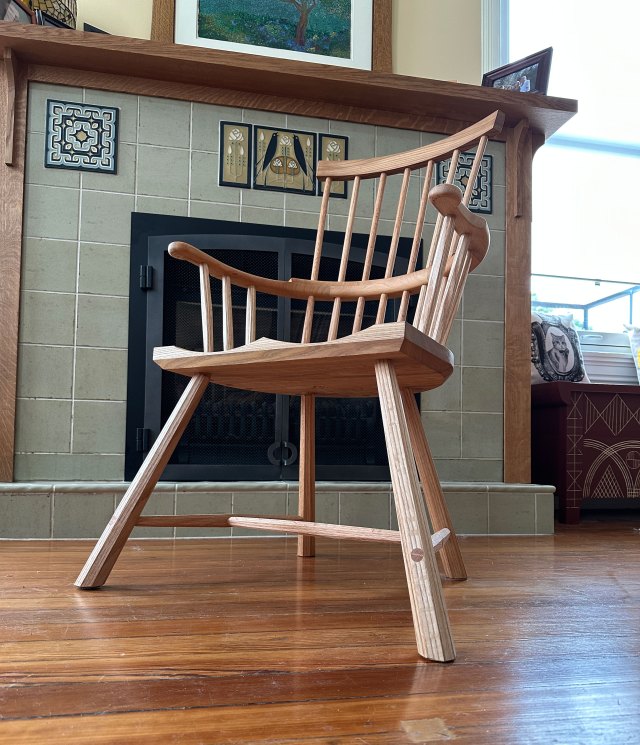
Here we have one of my seven-stick comb-back chairs set up for lounging by the fire. It is finished with earth pigments, purified linseed oil and soft wax. This is the chair form shown on the cover of “The Stick Chair Book: 2nd Revised Edition.”
I’m selling this chair for $1,900 via a random drawing; details are below. That price includes crating and shipping to anywhere in the continental U.S. But first, some details on the chair.
This chair is ideal for relaxing by a fire. The back sticks tilt at 20°, with the seat tilted an additional 5°. The seat is 16-5/8” off the floor at the pommel, but I am happy to cut that down for shorter sitters.

Like all my chairs, this one is assembled with animal glue, which allows for easy repairs in the (far away) future. All joints are glued and wedged with local hickory for strength.
The chair’s finish is one I developed so the chair will immediately look at home among antiques or in an older home. The chair is colored with earth pigments – soot from the fire and red dirt from Ercolano, Italy. Before the pigment bonds with the wood, I gently wipe away some of the pigment on the seat, arm and combs. This is to suggest some age on the chair, but it is not intended to fool anyone. It’s just too subtle.
After the pigment and oil has polymerized, I coat the chair in soft wax to provide some sheen and some protection. The finish is entirely non-toxic.

Like all my chairs, the parts are shaped and fitted using hand tools. That means the surfaces are smooth where they contact the body and a bit textured on the underside from the hand tools. This is how these chairs were made, it’s how they have always looked and it would be odd to sand the secondary surfaces to a mirror.
How to Buy the Chair
I’m selling this chair for $1,900 via a random drawing. That price includes everything – shipping and crating to anywhere in the lower 48. If you wish to buy the chair, send an email to lapdrawing@lostartpress.com before 3 p.m. (Eastern) on Friday, December 12. Please use the subject line: “Stick chair.” In the email please include your:
- U.S. shipping address
- Daytime phone number (this is for the trucking quote only)
If you are the “winner” the chair will be shipped to your door. The price includes the crate and all shipping charges. There are no additional charges. Alternatively, the chair can be picked up at our storefront. (I’m sorry but the chair cannot be shipped outside the U.S.)














